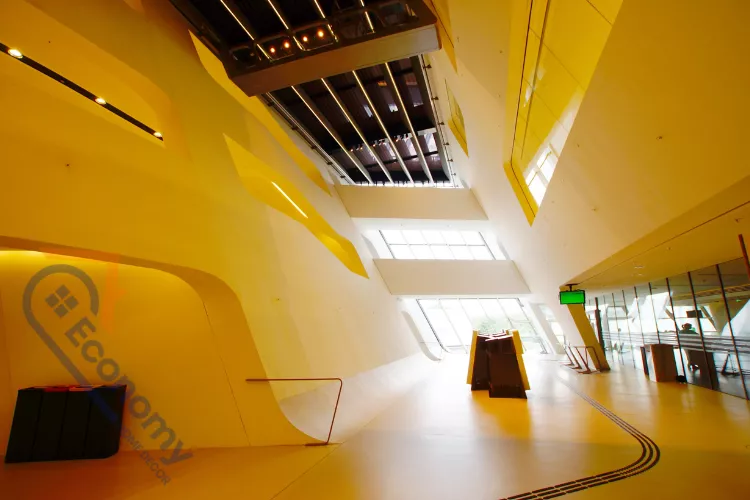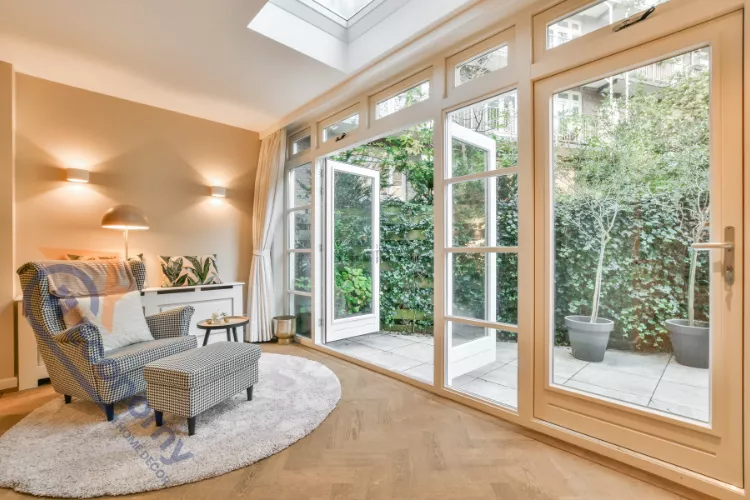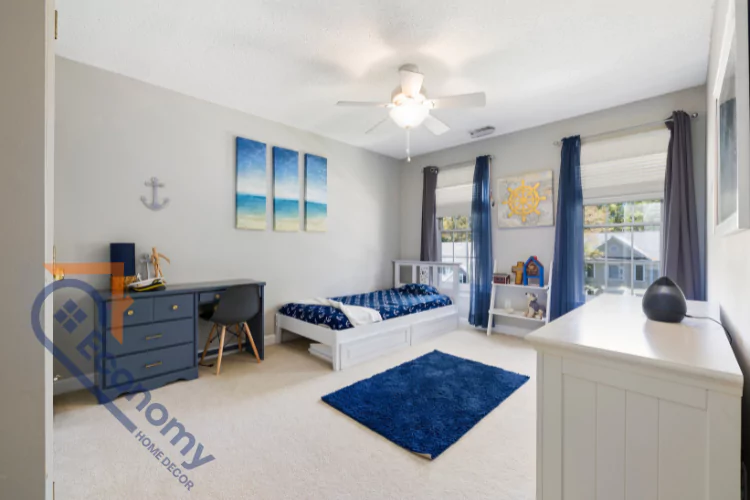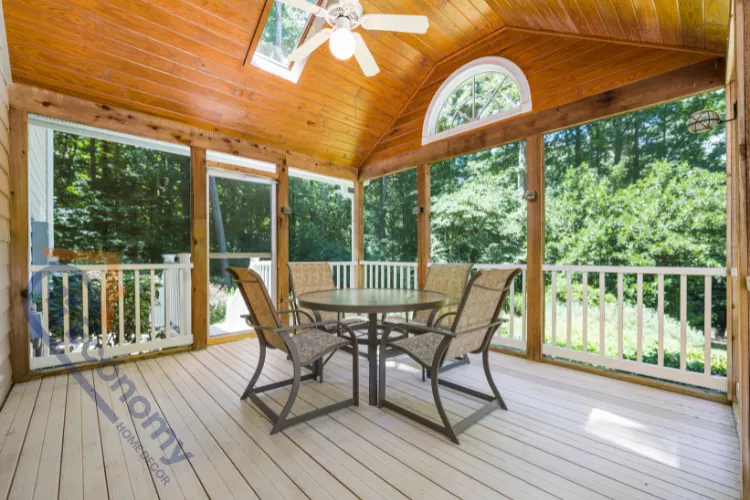Curved walls add architectural interest and elegance to any home, but they can feel like a design puzzle when it comes time to decorate them. Whether you’re dealing with a curved entryway, a rounded staircase wall, or a gentle arc in your living room, these unique spaces deserve special attention. The good news? With the right approach and creative curved wall decoration ideas, you can transform these challenging spaces into stunning focal points that showcase your personal style.
In this comprehensive guide, we’ll explore practical solutions for curved wall decor that work beautifully in real homes. From selecting the perfect artwork to creating gallery walls that follow your wall’s natural flow, you’ll discover everything you need to know about how to decorate a curved wall with confidence.
Key Takeaways
- Flexible decor options like fabric art and metal pieces work best on curved surfaces
- Proper spacing and planning prevent installation mistakes on curved walls
- Lighting enhances curved wall features and creates dramatic effects
- Multiple small pieces often work better than one large artwork
- Test arrangements on the floor before committing to wall placement
Understanding the Challenge of Curved Walls
Before diving into curved wall decorating ideas, it’s important to understand why these surfaces require special consideration. Unlike flat walls where you can simply hammer a nail and hang a frame, curved walls present unique challenges that affect both the visual appeal and practical installation of decorations.
The main challenge lies in how light interacts with curved surfaces. Shadows fall differently, creating depth that can either enhance or detract from your decor choices. Additionally, traditional hanging methods don’t always work well because frames and flat objects naturally want to sit flush against a wall. When you’re working with curved wall decoration, you need items that can either flex with the wall’s shape or sit far enough away that the curve doesn’t create awkward gaps.
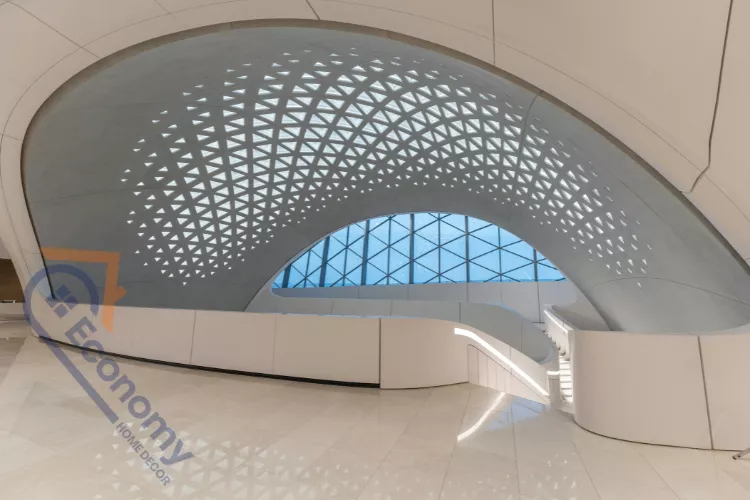
Many homeowners feel intimidated when they first tackle how to decorate curved wall spaces, but understanding these basic principles sets you up for success. The curve itself is actually an architectural feature worth celebrating rather than hiding. Think of it as an opportunity to create something truly special that flat walls simply can’t achieve. Your curved wall can become the most talked-about feature in your home when decorated thoughtfully.
Assessing Your Curved Wall Space
The first step in successful curved wall decor is taking accurate measurements and understanding your specific wall’s characteristics. Not all curves are created equal—some are gentle arcs while others create dramatic sweeps that require different decorating approaches.
Start by measuring the wall’s height and width at multiple points. For curved staircase walls, measure both the highest and lowest points where you want decor to reach. Take photos from different angles and lighting conditions to see how shadows play across the surface throughout the day. This information helps you make informed decisions about what types of curved wall decoration ideas will work best in your space.
Consider the wall’s location and purpose too. A curved wall entry serves as a first impression for guests and might call for bold, welcoming decor. Meanwhile, decorating curved walls living room spaces might require a more subtle approach that complements your existing furniture and design scheme. Take note of any architectural elements like windows, doors, or built-in features that will affect your decorating plans. Understanding your space thoroughly before shopping or planning saves time and prevents costly mistakes.
Best Materials for Curved Wall Decoration
Choosing the right materials makes all the difference when figuring out how to decorate a curved wall. Some materials naturally adapt to curves, while others fight against them and create frustrating installation challenges.
Flexible and Curve-Friendly Materials:
- Metal wall art with three-dimensional elements
- Fabric-based wall hangings and tapestries
- Lightweight paper artwork
- Vinyl decals and wall stickers
- Wooden pieces with natural curves
- Wire sculptures and macramé
Curved metal wall decor ranks among the most popular choices because metal can be shaped to follow wall contours while maintaining structural integrity. These pieces often feature flowing designs that complement the wall’s natural curve rather than fighting against it. Similarly, curved wood wall decor brings warmth and organic beauty to spaces, with the wood’s natural flexibility making installation more forgiving.
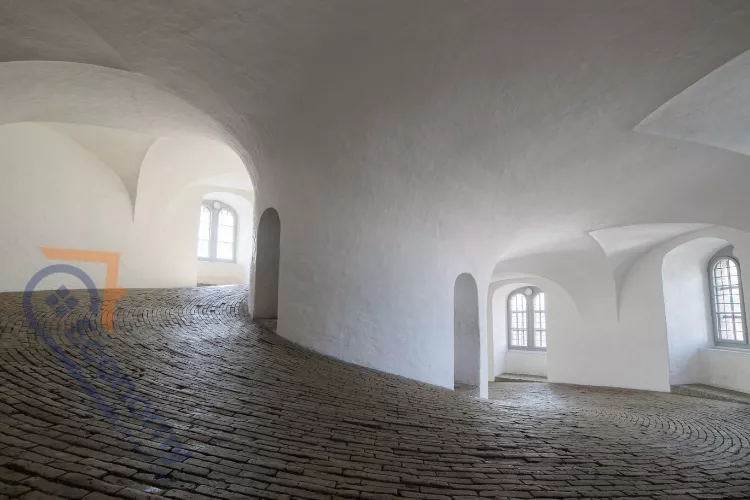
Fabric-based options like tapestries work wonderfully for decorating a curved wall because they drape naturally and don’t require perfectly flat surfaces. The textile’s flexibility means you won’t see gaps between the wall and your decor. For foyer curved wall decor, consider pieces that make a statement without overwhelming the space—perhaps a medium-sized metal sculpture or an elegant fabric banner that welcomes guests.
Avoid materials that are too rigid or heavy, as these create installation nightmares on curved surfaces. Thick, heavy frames with glass tend to pull away from curved walls, creating visible gaps that look unfinished. When possible, opt for frameless artwork or pieces specifically designed to work with architectural curves.
Creating Gallery Walls on Curved Surfaces
Gallery walls represent one of the most versatile approaches to curved wall decor ideas. By using multiple smaller pieces instead of one large item, you can work with the wall’s natural shape rather than against it.
The key to successful gallery walls on curves is planning your layout before making a single hole in the wall. Cut out paper templates matching your artwork sizes and use painter’s tape to arrange them on the curved surface. Step back frequently to check how the arrangement looks from different angles and distances. This process helps you visualize the final result and adjust spacing to accommodate the curve.
For curved staircase wall decorating ideas, consider arranging pieces in an ascending pattern that follows the stairs’ rise. This creates a natural flow that guides the eye upward while working harmoniously with the architecture. Mix frame sizes and shapes to add visual interest, but maintain consistent spacing between pieces to create cohesion. Generally, 2-3 inches between frames works well, though you might need to adjust slightly based on your specific curve’s radius.
When selecting artwork for your gallery wall, choose pieces with varying depths. Some items should sit closer to the wall while others extend further out, creating a three-dimensional effect that actually enhances the curved surface rather than competing with it. This layered approach works especially well for decorating curved staircase wall areas where viewers see the display from multiple angles as they move up or down the stairs.
| Gallery Wall Layout Types | Best For | Difficulty Level | Visual Impact |
|---|---|---|---|
| Ascending Diagonal | Staircase walls | Moderate | High |
| Organic Cluster | Entryways | Easy | Medium-High |
| Linear Progression | Long curved halls | Moderate | Medium |
| Symmetrical Grid (adapted) | Formal spaces | Challenging | High |
| Random Eclectic Mix | Living rooms | Easy | High |
Lighting Solutions to Enhance Curved Walls
Lighting plays a crucial role in how to decorate a curved wall entry or any curved space effectively. Proper illumination highlights your decorative choices while emphasizing the wall’s architectural beauty.
Consider installing picture lights above individual art pieces or sconces that wash light across the curved surface. These fixtures add drama while ensuring your carefully chosen decor gets the attention it deserves. For curved staircase wall decor, LED strip lighting along the handrail or baseboards creates ambient illumination that makes the space feel larger and more welcoming, especially in the evening hours.
Track lighting offers flexibility for curved walls because you can adjust individual fixtures to highlight specific areas. Position lights to graze the wall’s surface at an angle, which emphasizes the curve’s dimensionality and creates interesting shadow play. This technique works particularly well with textured curved wall decorations like metal sculptures or dimensional fabric art.
Natural lighting matters too. Observe how daylight moves across your curved wall throughout the day and plan your decor placement accordingly. Pieces with reflective elements might create beautiful effects during golden hour but could cause glare at midday. Similarly, delicate fabrics or artwork might fade if exposed to direct sunlight for extended periods. Balance your artificial and natural lighting to create a space that looks beautiful around the clock while protecting your decorative investments.
Decorating Curved Entryways and Foyers
First impressions matter, which is why learning how to decorate a curved wall entryway deserves special attention. Your entryway sets the tone for your entire home, and a curved wall in this space offers a unique opportunity to create a memorable welcome.
For foyer curved wall decor, consider pieces that reflect your personal style while remaining appropriately scaled for the space. Oversized mirrors work beautifully on curved walls because they reflect light and make the entry feel more spacious. Look for mirrors with interesting frames that add character without overwhelming the architecture. If your curved wall wraps around a corner, position the mirror to reflect something beautiful—perhaps a chandelier or a view into your main living area.
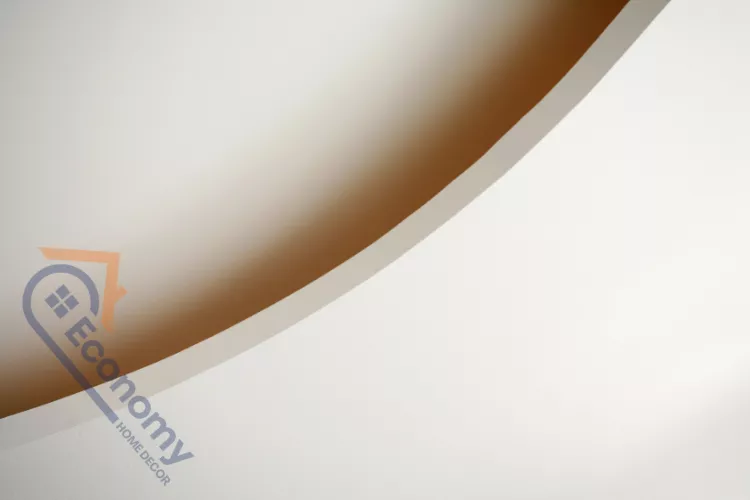
Console tables paired with wall decor create functional vignettes in curved entryways. Place a narrow console against the straightest portion of the curved wall, then arrange decor above and around it. This approach provides a landing spot for keys and mail while creating a cohesive decorative statement. Choose decor for curved wall spaces that has vertical elements to draw the eye upward and make the ceiling feel taller.
When selecting pieces for entryway curves, think about the view from outside too. If your curved wall is visible through windows or glass doors, choose decor that looks attractive from both inside and outside perspectives. Sculptural elements, botanical displays, or elegant fabric hangings all work well for this purpose. Remember that entryways experience temperature fluctuations when doors open and close, so avoid delicate items that might be damaged by these environmental changes.
Curved Staircase Wall Design Ideas
Staircase walls present unique opportunities for creative expression, and curved staircases are especially stunning when decorated thoughtfully. Wall decor for curved staircase spaces must consider the viewer’s changing perspective as they move up or down the stairs.
One effective approach involves creating a visual journey that unfolds as people climb the stairs. Start with smaller pieces at the bottom and gradually increase size or drama as the wall rises. This progression creates anticipation and rewards the eye with new details at each landing. Alternatively, you might arrange curved stair wall decor in a flowing pattern that mimics the stairs’ curve, creating harmony between architecture and decoration.
Family photo galleries work wonderfully on curved staircase walls because they tell a story that naturally progresses as viewers ascend. Arrange photos chronologically from bottom to top, creating a timeline that family members and guests enjoy exploring. Use consistent frame styles and matting to maintain visual cohesion even as the images vary. For a more modern approach, mix photographs with abstract pieces or inspirational quotes that add personality without overwhelming the space.
Decorating ideas for curved walls on staircases should also consider safety and practicality. Ensure that no decor extends far enough to interfere with handrails or create hazards for people carrying items up and down the stairs. Choose secure hanging methods that can withstand the vibrations and air movement created by foot traffic. Test each piece’s stability before considering the installation complete, giving frames a gentle shake to ensure they’re firmly attached.
Working with Curved Wall Niches
If you’re wondering how to decorate curved wall niche spaces, you’re dealing with one of the most charming architectural features a home can offer. These alcoves provide perfect opportunities for creating miniature displays that pack maximum visual punch.
Curved niches work beautifully as display spaces for three-dimensional objects rather than flat artwork. Consider placing sculptures, pottery, or treasured collections in these spaces. The niche’s depth allows objects to sit comfortably while the curved back wall creates an attractive backdrop that draws attention to your displayed items. Add a small shelf if your niche doesn’t already have one, choosing materials that complement your home’s overall design aesthetic.
Lighting transforms curved niches from simple recesses into dramatic focal points. Install small LED puck lights at the niche’s top to wash light down over displayed objects, creating shadows and highlights that add depth and interest. For decorating a curved staircase wall that includes niches, coordinating the niche displays with your overall staircase decor creates a cohesive design that feels intentional and polished.
Paint treatments can dramatically affect how curved niches appear. Painting the niche interior a contrasting color from the surrounding wall creates depth and makes displayed objects pop. Metallic paints add glamour and reflect light beautifully in curved spaces. For a subtler approach, paint the niche the same color as the wall but in a different finish—perhaps matte walls with semi-gloss niches. This creates texture variation that catches light differently and adds visual interest without bold color statements.
Using Large-Scale Art on Curved Walls
While we’ve discussed using multiple smaller pieces, big curved wall decoration using single large-scale artworks can make powerful statements when done correctly. The key is selecting pieces designed to work with curves or that are flexible enough to adapt.
Large fabric art pieces, oversized tapestries, or canvas prints mounted on flexible backing work well for curved wall home decor projects involving substantial wall space. These materials can curve with the wall without creating the problematic gaps that rigid, framed pieces would show. When hanging large flexible pieces on curves, start at the center and work outward, smoothing the material as you go to ensure it follows the wall’s contour naturally.
Another approach to large-scale how to decorate curved wall spaces involves triptychs or multi-panel artworks. By breaking a large image into several connected panels, you can arrange them to follow the curve while maintaining the overall composition’s integrity. Space the panels slightly apart to allow each piece to sit properly against the curved surface. This technique works particularly well for abstract art where small variations in alignment won’t disrupt the visual flow.
For truly dramatic effect, consider commissioning custom art specifically designed for your curved wall’s dimensions and contour. Many artists work with curves regularly and can create pieces that celebrate rather than fight your wall’s unique shape. While this option requires more investment upfront, the result is a one-of-a-kind artwork perfectly suited to your space that becomes a true focal point worth the splurge.
Color and Pattern Strategies for Curved Walls
The colors and patterns you choose significantly impact how curved walls appear in your space. Strategic use of paint, wallpaper, and decorative elements can either emphasize or downplay your wall’s curve depending on your design goals.
If you want to celebrate the curve and make it a feature, consider painting it a contrasting color from adjacent flat walls. This technique draws attention to the architectural element and provides a dramatic backdrop for wall decor for curved walls. Deep, rich colors work especially well because they create depth and make displayed artwork pop. Jewel tones like emerald, sapphire, or amethyst add sophistication while highlighting the wall’s unique shape.
Patterns require careful consideration on curved surfaces. Large-scale patterns can become distorted as they wrap around curves, sometimes creating dizzying effects. If you love pattern, opt for small-scale, non-directional designs that read as texture from a distance. Grasscloth wallpaper, for example, adds subtle texture and visual interest without overwhelming curved walls. For decorating curved walls living room areas, consider using pattern on adjacent flat walls while keeping the curved wall more neutral to maintain balance.
Gradient paint effects work beautifully on curves, with color transitioning from light to dark as the wall curves away. This technique adds dimension while complementing the wall’s natural contours. Use a spray system or sponging technique to create smooth color transitions that enhance rather than compete with your chosen decor pieces. Remember that curves already create natural shadow gradients, so your paint treatment should work with these existing light variations.
Hanging Techniques for Curved Surfaces
Mastering proper installation methods is essential when learning how to decorate a room with a curved wall. Standard picture-hanging approaches often fail on curves, requiring adapted techniques that ensure secure, attractive installations.
Traditional picture hooks designed for flat walls don’t always grip properly on curves. Instead, use adhesive hanging strips rated for your artwork’s weight, as these conform better to curved surfaces. For heavier pieces, install anchors directly into studs whenever possible, drilling perpendicular to the wall’s surface at each point. This ensures secure attachment even as the wall curves away from true vertical.
For how to decorate curved staircase wall spaces, consider using a combination of hanging methods. Lightweight pieces can use adhesive strips, while medium-weight items benefit from traditional hooks installed at multiple points. Very heavy sculptures or large mirrors require professional installation with specialized hardware designed for curved applications. Don’t cut corners on hanging hardware—improperly secured decor poses safety risks and can damage your walls when pieces eventually fall.
Creating level horizontal arrangements on curved walls requires extra attention. Use a laser level that can project across the curve, marking your desired height at multiple points. When hanging gallery walls, establish your baseline carefully, then measure up or down from that line for additional pieces. Remember that “level” on a curved wall means equidistant from the floor or ceiling, not necessarily following the curve itself, depending on the effect you want to achieve.
Incorporating Mirrors and Reflective Elements
Mirrors serve double duty on curved walls, functioning as both decorative elements and practical tools that enhance space and light. Curved wall decor incorporating mirrors creates dynamic visual effects impossible to achieve on flat surfaces.
Curved mirrors on curved walls create fascinating optical effects, multiplying the curve’s impact while adding depth to spaces. Shop for mirrors with gentle curves that echo your wall’s contour—perfect repetition isn’t necessary and might look too matchy. Position mirrors to reflect attractive views or light sources, avoiding placements that reflect clutter or unflattering angles.
For wall decor above curved headboard placements in bedrooms, mirrors add glamour while making rooms feel larger. Choose frames with interesting details that add character without requiring the mirror to sit perfectly flat against the curve. Sunburst mirrors work particularly well because their dimensional design naturally creates space between the center mirror and the wall, making curves less problematic. Lean large mirrors against curved walls on furniture instead of hanging them—this eliminates installation challenges while creating casual, layered looks.
Reflective metal curved wall decorations catch and bounce light beautifully, creating movement and interest as lighting conditions change throughout the day. Polished copper, brass, or silver finishes add luxury and sophistication while their malleability allows them to adapt to curved surfaces. Mix reflective elements with matte finishes to create contrast and prevent spaces from feeling too shiny or cold.
Seasonal and Changeable Curved Wall Decor
One advantage of careful curved wall decoration planning is creating systems that allow seasonal updates without major reinstallation projects. Flexible decor approaches let you refresh your space regularly while working within curved walls’ constraints.
Install a picture rail or gallery rail system along curved walls to create hanging flexibility. These systems allow you to suspend artwork using adjustable cables or chains, making piece swaps easy without creating new nail holes. For curved wood wall decor enthusiasts, wooden picture rails complement the warmth of wood decorative elements while providing practical functionality.
Removable adhesive hooks and strips make seasonal rotations simple for lightweight decor. Create a collection of pieces appropriate for different seasons or holidays, storing off-season items carefully until needed. This approach works especially well for decorating a curved staircase wall where fresh seasonal looks keep the space feeling dynamic and current.
Consider creating themed displays that rotate quarterly or semi-annually. Spring might feature botanical prints and fresh colors, while fall brings in warmer tones and harvest themes. This rotation keeps your space feeling fresh without requiring complete redesigns. Document your successful arrangements with photos so you can recreate favorite layouts in future years without starting from scratch.
Budget-Friendly Curved Wall Decoration Ideas
Creating beautiful curved wall decor ideas doesn’t require unlimited budgets. Many effective solutions cost little while delivering impressive visual impact through creativity rather than expensive materials.
DIY paper art projects offer affordable ways to decorate curved wall spaces with custom pieces perfectly suited to your dimensions and style. Create paper flower walls, origami installations, or cut-paper designs that add dimension and interest. Paper’s flexibility makes it ideal for curves, and online tutorials provide step-by-step guidance for various skill levels. Frame interesting scrapbook papers, fabric swatches, or wallpaper samples for instant affordable art that you can change seasonally.
Thrift stores and estate sales yield treasures perfect for curved metal wall decor projects at fraction of retail costs. Look for interesting plates, serving trays, or architectural salvage pieces that can be mounted as decorative elements. Spray paint transforms mismatched pieces into cohesive collections that look intentionally curated. Mix metals—brass, copper, and silver—for collected-over-time appeal that feels authentic and personal.
Nature provides free decorative materials that work beautifully on curves. Create botanical displays using pressed flowers, interesting branches, or leaf collections. These organic elements add texture and bring outdoors inside while celebrating nature’s own curves and flowing lines. Mount them on simple backing boards or float them between glass panels for museum-quality looks at minimal cost.
Conclusion
Learning how to decorate a curved wall transforms challenging architectural features into stunning focal points that elevate your entire home’s design. From curved entryways that welcome guests with style to dramatic staircase walls that create visual journeys, these unique spaces deserve thoughtful attention that celebrates their distinctive character.
Remember that successful curved wall decoration ideas always start with careful assessment, proper planning, and choosing materials that work with your wall’s natural shape rather than fighting against it. Whether you’re creating elaborate gallery walls, hanging single statement pieces, or incorporating curved wall decorations into seasonal displays, the principles remain the same: respect the architecture, use appropriate installation methods, and let your personal style shine through.
Don’t feel pressured to decorate your curved walls all at once. Start with one technique or area, evaluate the results, and build from there. Many homeowners find that decorating curved walls living room spaces or entryways becomes easier once they’ve mastered basic techniques on smaller sections. Most importantly, enjoy the process of transforming these special architectural features into personalized expressions of your taste and creativity.
Frequently Asked Questions
Flexible materials like metal sculptures, fabric art, and lightweight canvas pieces work best on curved surfaces. These items can adapt to the wall’s contour without creating gaps. Avoid heavy, rigid frames with glass, as they tend to pull away from curved walls and look unfinished.
Create paper templates of your artwork and arrange them on the wall using painter’s tape before making any holes. Follow the stairs’ ascending line while maintaining 2-3 inches between pieces. Mix frame sizes for visual interest and ensure each piece sits securely against the curve using appropriate hanging hardware.
Yes, but choose small-scale, non-directional patterns that won’t distort on the curve. Grasscloth or subtle textures work better than large, directional patterns. Consider hiring a professional installer for curved applications, as proper technique prevents bubbling and misalignment.
Use adjustable track lighting, picture lights above individual pieces, or LED strip lighting along baseboards or handrails. Position lights to graze the wall at angles that emphasize the curve’s dimensionality and create attractive shadow play.
Try DIY paper art, thrift store finds you can repaint or repurpose, or natural elements like pressed botanicals. Removable adhesive strips eliminate the need for professional installation while allowing easy seasonal changes. Gallery walls using affordable prints in simple frames create high impact at low cost.
You can paint them the same or use contrasting colors to emphasize the curve. Deep, rich colors create depth and make artwork pop, while lighter shades make spaces feel larger. Consider gradient effects that enhance the wall’s natural contours.
Maintain 2-3 inches between frames generally, though you may need slight adjustments based on your specific curve’s radius. Consistent spacing creates cohesion even when the curve causes slight variations in how pieces sit against the wall.

